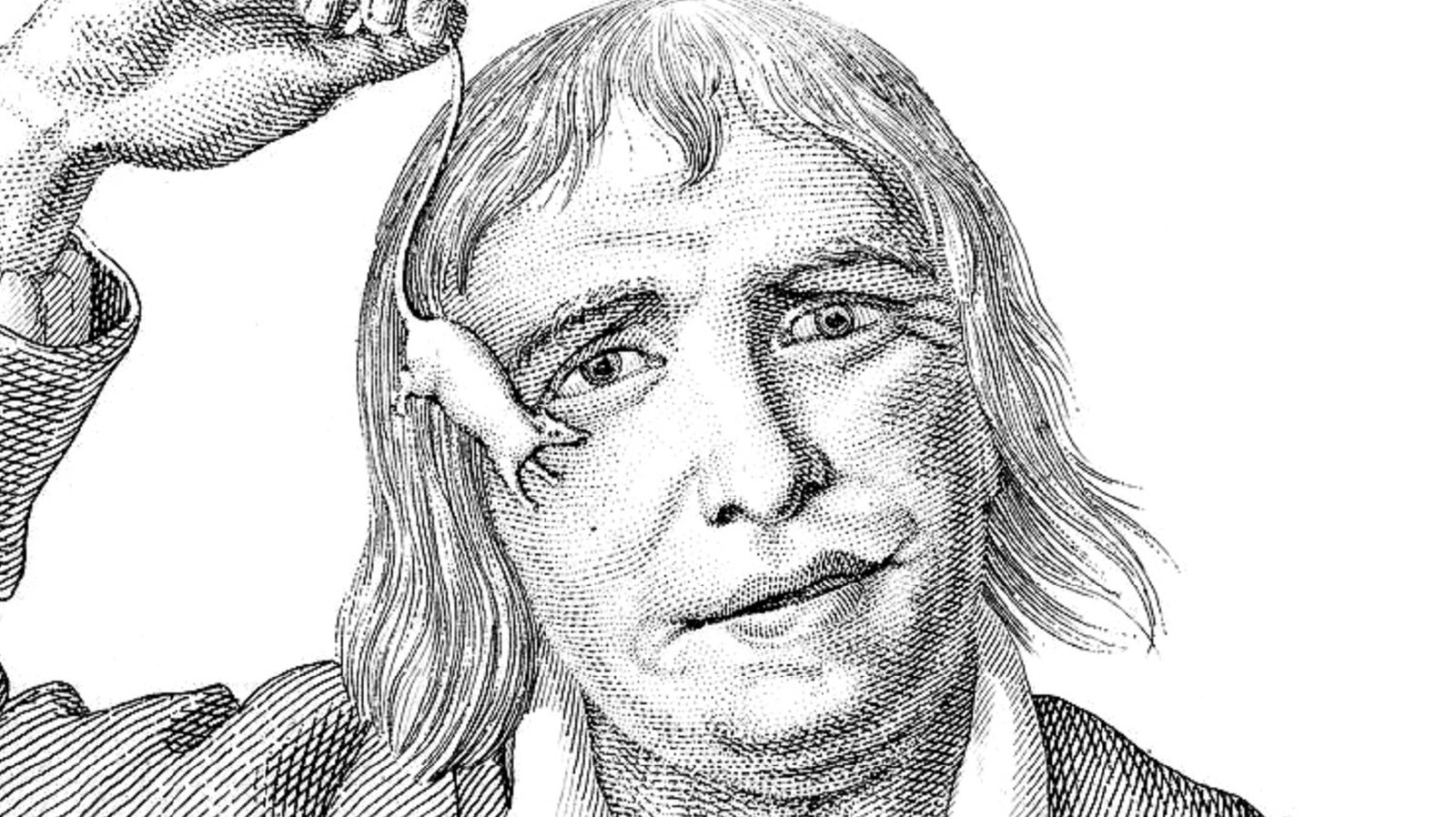The Bizarre Case Of Tarrare: An Autopsy That Shocked The World
What is "tarrare autopsy?"
Tarrare autopsy refers to the post-mortem examination of Tarrare, a notorious French showman and alleged cannibal who lived in the late 18th century. The autopsy revealed several intriguing and disturbing findings, including:
An unusually large stomach and intestines, capable of holding vast quantities of food.
A lack of normal digestive enzymes, suggesting that Tarrare's body was unable to properly break down food.
Evidence of coprophagia, or the consumption of feces.
The autopsy of Tarrare provided valuable insights into the extreme and bizarre medical condition of this enigmatic individual.
The findings of the autopsy on Tarrare have been cited in numerous medical and scientific publications, and the case continues to fascinate researchers and historians alike.
Tarrare Autopsy
The autopsy of Tarrare, a notorious French showman and alleged cannibal, revealed several intriguing and disturbing findings, including:
- Unusual stomach and intestines: Tarrare's stomach and intestines were unusually large, capable of holding vast quantities of food.
- Lack of digestive enzymes: Tarrare's body lacked normal digestive enzymes, suggesting that he was unable to properly break down food.
- Coprophagia: The autopsy revealed evidence of coprophagia, or the consumption of feces.
- Polyphagia: Tarrare exhibited polyphagia, or an insatiable appetite, and could consume enormous amounts of food in a single sitting.
- Medical condition: The autopsy findings suggest that Tarrare suffered from a rare medical condition that affected his digestive system.
- Historical context: The autopsy of Tarrare provides a glimpse into the medical knowledge and practices of the late 18th century.
- Continuing fascination: The case of Tarrare continues to fascinate researchers and historians alike, and his autopsy remains an important source of information about this enigmatic individual.
These key aspects of Tarrare's autopsy offer valuable insights into his extreme and bizarre medical condition. His case highlights the importance of understanding the complex interplay between the human body and mind, and the challenges faced by medical professionals in treating rare and unusual conditions.
- Kelly Monaco Husband
- Wentworth Miller Spouse 2024
- Where Is Diana Lovejoy Now
- Joy Philbin
- Smalltownbecky Only Fans
| Name | Born | Died | Occupation |
|---|---|---|---|
| Tarrare | 1772 | 1798 | Showman, alleged cannibal |
Unusual stomach and intestines
The autopsy of Tarrare revealed that his stomach and intestines were unusually large, capable of holding vast quantities of food. This finding is significant because it provides evidence of Tarrare's extreme medical condition.
- Polyphagia: Tarrare's insatiable appetite and ability to consume enormous amounts of food in a single sitting is likely linked to the unusual size of his stomach and intestines.
- Digestive disorders: The lack of normal digestive enzymes in Tarrare's body, combined with the large size of his stomach and intestines, suggests that he may have suffered from a rare digestive disorder.
- Medical treatments: The autopsy findings may have influenced the medical treatments that were attempted on Tarrare, such as the administration of opium and the insertion of a feeding tube.
- Historical context: The autopsy of Tarrare provides a glimpse into the medical knowledge and practices of the late 18th century, when doctors were grappling to understand and treat rare and unusual conditions.
Overall, the unusual size of Tarrare's stomach and intestines is a key aspect of his autopsy findings, and it offers valuable insights into his extreme medical condition and the challenges faced by medical professionals in treating him.
Lack of digestive enzymes
The autopsy of Tarrare revealed that his body lacked normal digestive enzymes, suggesting that he was unable to properly break down food. This finding is significant because it provides evidence of Tarrare's extreme medical condition and may explain some of his unusual behaviors.
- Digestive disorders: The lack of normal digestive enzymes in Tarrare's body suggests that he may have suffered from a rare digestive disorder that prevented his body from properly breaking down food.
- Nutritional deficiencies: The inability to properly break down food can lead to nutritional deficiencies, which may have contributed to Tarrare's health problems and unusual behaviors.
- Medical treatments: The autopsy findings may have influenced the medical treatments that were attempted on Tarrare, such as the administration of opium and the insertion of a feeding tube.
- Historical context: The autopsy of Tarrare provides a glimpse into the medical knowledge and practices of the late 18th century, when doctors were grappling to understand and treat rare and unusual conditions.
Overall, the lack of normal digestive enzymes in Tarrare's body is a key aspect of his autopsy findings, and it offers valuable insights into his extreme medical condition and the challenges faced by medical professionals in treating him.
Coprophagia
The autopsy of Tarrare, a notorious French showman and alleged cannibal, revealed evidence of coprophagia, or the consumption of feces. This finding is significant because it provides evidence of Tarrare's extreme medical condition and may explain some of his unusual behaviors.
- Nutritional deficiency: Coprophagia can be a sign of nutritional deficiency, as animals and humans may consume feces to obtain nutrients that are lacking in their diet. In Tarrare's case, his lack of normal digestive enzymes may have prevented him from properly absorbing nutrients from food, leading him to consume feces in an attempt to satisfy his nutritional needs.
- Mental health disorders: Coprophagia can also be a symptom of certain mental health disorders, such as pica, which is characterized by the persistent eating of non-food items. In Tarrare's case, it is possible that he suffered from a mental health disorder that contributed to his coprophagia.
- Medical treatments: The autopsy findings may have influenced the medical treatments that were attempted on Tarrare, such as the administration of opium and the insertion of a feeding tube. Doctors may have believed that Tarrare's coprophagia was a sign of a physical or mental illness, and they may have attempted to treat the underlying condition.
- Historical context: The autopsy of Tarrare provides a glimpse into the medical knowledge and practices of the late 18th century, when doctors were grappling to understand and treat rare and unusual conditions. Tarrare's coprophagia may have been a source of fascination and speculation among medical professionals, and it may have influenced the way that they viewed and treated mental illness and digestive disorders.
Overall, the evidence of coprophagia in Tarrare's autopsy is a significant finding that offers valuable insights into his extreme medical condition, possible mental health disorders, and the medical practices of the late 18th century.
Polyphagia
Tarrare's polyphagia, or insatiable appetite, was a defining characteristic that played a significant role in his life and contributed to the findings of his autopsy. This extreme hunger had several implications:
- Nutritional deficiencies: Tarrare's inability to satisfy his appetite through normal means may have led to nutritional deficiencies, as he was unable to consume enough nutrient-rich foods to meet his body's needs.
- Digestive disorders: His polyphagia may have been a symptom of an underlying digestive disorder that prevented his body from properly absorbing nutrients from food, leading to malnutrition and other health problems.
- Unusual behaviors: Tarrare's insatiable appetite drove him to engage in unusual behaviors, such as consuming rotten meat and animal carcasses, in an attempt to satisfy his hunger.
The autopsy of Tarrare revealed the physical consequences of his polyphagia, including an unusually large stomach and intestines, as well as a lack of normal digestive enzymes. These findings suggest that Tarrare's extreme appetite was not simply a matter of choice but rather a manifestation of a complex medical condition.
Medical condition
The autopsy of Tarrare, a notorious French showman and alleged cannibal, revealed several intriguing and disturbing findings, including evidence of a rare medical condition that affected his digestive system. This condition may have contributed to his unusual behaviors, including his insatiable appetite and consumption of non-food items.
- Polyphagia: Tarrare's insatiable appetite, or polyphagia, may have been a symptom of his underlying medical condition. This condition may have disrupted his body's ability to regulate hunger and satiety, leading him to consume excessive amounts of food.
- Digestive disorders: The autopsy revealed that Tarrare's body lacked normal digestive enzymes, suggesting that he may have suffered from a rare digestive disorder. This disorder may have prevented his body from properly breaking down food, leading to malnutrition and other health problems.
- Coprophagia: The autopsy also revealed evidence of coprophagia, or the consumption of feces. This behavior may have been a sign of Tarrare's nutritional deficiencies, as he may have been attempting to obtain nutrients that were lacking in his diet.
Overall, the autopsy findings suggest that Tarrare suffered from a rare medical condition that affected his digestive system. This condition may have played a significant role in his unusual behaviors, and it may have contributed to his death at the age of 26.
Historical context
The autopsy of Tarrare, a notorious French showman and alleged cannibal, provides a valuable window into the medical knowledge and practices of the late 18th century. By studying Tarrare's unique medical condition and the autopsy findings, medical professionals were able to gain insights into digestive disorders and nutritional deficiencies.
The autopsy revealed that Tarrare suffered from an unusually large stomach and intestines, a lack of normal digestive enzymes, and evidence of coprophagia. These findings suggest that Tarrare may have suffered from a rare digestive disorder that prevented his body from properly breaking down and absorbing nutrients from food. This condition may have contributed to his insatiable appetite and unusual behaviors.
The medical knowledge and practices of the late 18th century were limited, and doctors were still grappling to understand and treat rare and unusual conditions. Tarrare's autopsy provided valuable information that helped to advance medical knowledge and improve the treatment of digestive disorders.
Continuing fascination
The continuing fascination with Tarrare and his autopsy can be attributed to several factors. Firstly, his case is unique and perplexing. The combination of his unusual physical characteristics, insatiable appetite, and bizarre behaviors has puzzled medical professionals and historians for centuries. Secondly, Tarrare's autopsy provides valuable insights into the medical knowledge and practices of the late 18th century. By studying Tarrare's unique medical condition, doctors were able to gain a better understanding of digestive disorders and nutritional deficiencies. This knowledge has helped to advance medical science and improve the treatment of these conditions.
The case of Tarrare highlights the importance of studying rare and unusual medical conditions. By examining these cases, researchers can gain valuable insights into the human body and its complexities. This knowledge can lead to the development of new treatments and therapies that can improve the lives of people with rare diseases.
The continuing fascination with Tarrare and his autopsy is a testament to the power of medical research and the importance of understanding the complexities of the human body. By studying these unique cases, we can gain valuable insights that can help us to improve the health and well-being of all people.
FAQs about Tarrare Autopsy
The autopsy of Tarrare, a notorious French showman and alleged cannibal, has fascinated researchers and historians for centuries. Here are some frequently asked questions and their answers:
1. What was the most unusual finding of Tarrare's autopsy?
The most unusual finding of Tarrare's autopsy was his unusually large stomach and intestines, which were capable of holding vast quantities of food. His stomach was said to be able to hold up to 100 pounds of food at once.
2. What did the autopsy reveal about Tarrare's digestive system?
The autopsy revealed that Tarrare's body lacked normal digestive enzymes, suggesting that he was unable to properly break down food. This may have contributed to his insatiable appetite and unusual behaviors.
3. What evidence of coprophagia was found during Tarrare's autopsy?
The autopsy revealed evidence of coprophagia, or the consumption of feces. This behavior may have been a sign of Tarrare's nutritional deficiencies, as he may have been attempting to obtain nutrients that were lacking in his diet.
4. What can Tarrare's autopsy tell us about the medical knowledge and practices of the late 18th century?
Tarrare's autopsy provides a glimpse into the medical knowledge and practices of the late 18th century. Doctors at the time were still grappling to understand and treat rare and unusual conditions, and Tarrare's case provided valuable insights into digestive disorders and nutritional deficiencies.
5. Why does the case of Tarrare continue to fascinate researchers and historians?
The case of Tarrare continues to fascinate researchers and historians because it is unique and perplexing. His unusual physical characteristics, insatiable appetite, and bizarre behaviors have puzzled medical professionals and historians for centuries.
6. What can we learn from studying the case of Tarrare and his autopsy?
Studying the case of Tarrare and his autopsy can provide valuable insights into the complexities of the human body. It can also help us to better understand rare and unusual medical conditions, and develop new treatments and therapies to improve the lives of people with these conditions.
The autopsy of Tarrare remains an important source of information about this enigmatic individual and provides valuable insights into the medical knowledge and practices of the late 18th century.
Next Article Section: Continuing Research on Tarrare's Medical Condition
Conclusion
The autopsy of Tarrare, a notorious French showman and alleged cannibal, has provided valuable insights into the complexities of the human body and the challenges faced by medical professionals in treating rare and unusual conditions. The findings of the autopsy, including the unusual size of Tarrare's stomach and intestines, the lack of normal digestive enzymes, and the evidence of coprophagia, suggest that Tarrare suffered from a rare medical condition that affected his digestive system.
Tarrare's case highlights the importance of continued research into rare and unusual medical conditions. By studying these cases, researchers can gain valuable insights into the human body and its complexities. This knowledge can lead to the development of new treatments and therapies that can improve the lives of people with rare diseases.
The autopsy of Tarrare remains an important source of information about this enigmatic individual and provides a glimpse into the medical knowledge and practices of the late 18th century. The continuing fascination with Tarrare and his autopsy is a testament to the power of medical research and the importance of understanding the complexities of the human body.

The True Story Of Tarrare, The Man Who Couldn't Stop Eating

Who Was Tarrare, The Man Who Could Eat Anything?

Articles The Tarrare Project